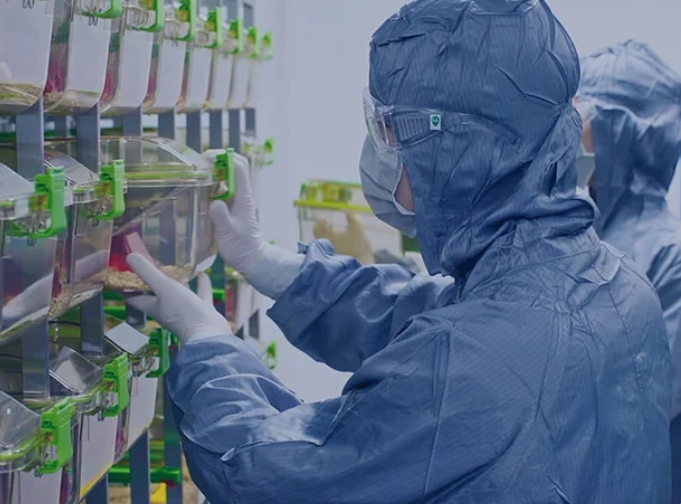Rodent PK Studies: Essential Insights for Drug Discovery
Rodent pharmacokinetic (PK) studies are invaluable in drug discovery, offering critical insights into drug behavior, safety, and efficacy. These studies enable researchers to understand how a drug is absorbed, distributed, metabolized, and excreted in a living system. With their cost-effectiveness and rapid turnaround, rodent models speed up the development process. This article delves into the importance and methods of rodent PK studies and their contributions to pharmaceutical development.

What Are Rodent PK Studies?
Definition and Role in Drug Development
Rodent pharmacokinetic (PK) studies examine how a drug behaves in the body, focusing on absorption, distribution, metabolism, and excretion (ADME). These studies are crucial in the early stages of drug development, as they help predict how the drug will respond in humans. By assessing these key pharmacokinetic parameters, rodent PK studies provide vital information on the safety and efficacy of new drug candidates, guiding further development and clinical trial decisions.
Why Rodents Are Commonly Used Models
Rodents, especially rats and mice, are commonly used in pharmacokinetic (PK) studies due to their biological similarity to humans, rapid lifecycle, and ease of maintenance. Their genetic, metabolic, and physiological traits offer valuable predictive insights into human pharmacokinetics, making them ideal for early-stage drug testing. Utilizing rodents in drug development allows for informed decision-making early on, reducing risks and improving the likelihood of success in later phases of clinical trials.
Key Pharmacokinetic Parameters Measured
Absorption, Distribution, Metabolism, Excretion (ADME)
Rodent PK studies evaluate key ADME parameters. Absorption measures how quickly and efficiently a drug enters the bloodstream. Distribution assesses how the drug is dispersed throughout the tissues and organs. Metabolism examines how the body breaks down the drug, typically in the liver. Excretion looks at how the drug is eliminated from the body, primarily via the kidneys. These metrics are crucial in understanding the drug’s overall efficacy and safety profile.
Half-Life, Bioavailability, and Clearance Rates
Half-life is the time it takes for the drug concentration to reduce by half in the bloodstream. Bioavailability measures the fraction of the drug that reaches systemic circulation when introduced in the body. Clearance rates indicate how effectively the drug is removed or processed by the body. Together, these parameters help optimize dosing regimens and ensure that the drug is effective yet non-toxic.
Advantages of Rodent PK Studies in Early Drug Screening
Speed and Cost-Effectiveness of Rodent Models
Rodent models offer significant advantages in terms of both speed and cost-effectiveness. Their shorter lifespans and rapid reproductive cycles facilitate the quick generation of study data, enabling researchers to obtain results within a shorter timeframe. Additionally, rodents are relatively inexpensive to house and maintain compared to larger animals. This affordability allows for the execution of extensive and repeated studies without incurring substantial financial costs, ultimately expediting the drug development timeline and improving overall efficiency.
Translational Value to Human PK Predictions
Rodent pharmacokinetic (PK) studies offer valuable translational insights for human drug development, providing crucial early data to inform clinical trials. Despite some physiological differences, rodents share many key metabolic pathways with humans, making them suitable predictive models for human pharmacokinetics. These studies allow researchers to identify potential human effects, such as absorption and metabolism patterns, early in the drug development process. This early insight helps refine drug candidates, ensuring smoother transitions from preclinical to clinical phases.
Best Practices for Conducting Rodent PK Studies
Dosing Strategies and Sample Collection
Effective dosing strategies are crucial for reliable pharmacokinetic (PK) studies, as incorrect dosage levels can lead to inaccurate results. It is essential to select doses that closely mirror therapeutic levels in humans to ensure meaningful data. Sampling techniques, including blood, plasma, and tissue collection, must be meticulously planned to capture precise time-course data. Proper handling, along with systematic collection of specimens at appropriate intervals, ensures data integrity, repeatability, and the overall reliability of the study.

Data Interpretation and Regulatory Considerations
Interpreting rodent PK data requires careful analysis to translate findings into human contexts. Researchers must be adept at identifying key patterns and discrepancies. Compliance with regulatory standards is equally important. These standards ensure that the studies are conducted ethically and that the data is robust and reliable. Regulatory adherence aligns the studies with the expectations of agencies like the FDA and EMA, essential for advancing to clinical phases.
Conclusion
Rodent PK studies are a cornerstone of drug discovery, providing essential insights into drug behavior, safety, and effectiveness. Through systematic evaluation of pharmacokinetic parameters, these studies allow researchers to optimize compounds and inform human clinical trials. The use of Rodent PK Study models accelerates the development process by delivering cost-effective, reliable, and predictive data. Embracing best practices ensures the generation of high-quality data, facilitating the advancement of new therapeutic options to market more swiftly and safely.
